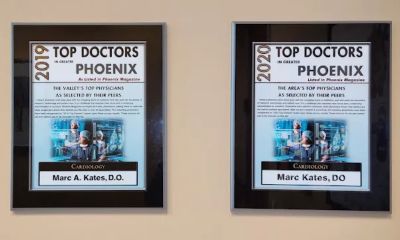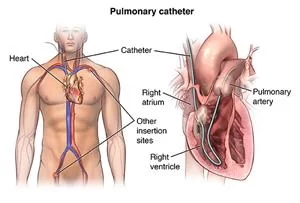Understanding Cardiac Catheterization
Cardiac catheterization is a medical procedure used to diagnose and treat certain heart conditions. It involves inserting a long, thin tube called a catheter into a blood vessel, usually in the groin, arm, or neck, which is then guided to the heart. The procedure allows doctors to see how the heart is functioning and can help identify blockages or other issues in the heart’s blood vessels. While the idea of undergoing a procedure like this can be intimidating, understanding what to expect can help ease any anxiety.

1. Before the Procedure: What to Expect
Before undergoing cardiac catheterization, there are a few important steps to follow. You’ll likely need to fast for several hours prior to the procedure, which means not eating or drinking anything for a specific period. This is necessary to ensure your stomach is empty for the procedure. Your doctor will provide instructions on how to prepare, including what medications to stop or continue taking.
On the day of the procedure, you’ll arrive at the hospital or clinic, where you’ll be checked in and taken to a pre-procedure area. You’ll change into a hospital gown, and the medical team will start an intravenous (IV) line to administer fluids and medications during the procedure. A sedative will likely be given to help you relax, but you will remain awake throughout the procedure.
Your doctor will explain the procedure in detail, answer any questions you may have, and confirm your medical history to ensure the best possible outcome. This is a good time to discuss any concerns, whether it’s about potential discomfort or how long the procedure will take.
Cardiac Solutions
cardiac solutions peoria
5651 W Talavi Blvd, Glendale, AZ 85306, USA

2. During the Procedure: What Happens Step by Step
The procedure itself typically takes between 30 minutes to an hour, depending on the complexity of the case. During the procedure, you’ll be lying on a table, and your doctor will clean and numb the area where the catheter will be inserted. Using a small needle, the doctor will create a small entry point into the blood vessel, through which the catheter is inserted.
The catheter is gently guided through the blood vessels to the heart, where it can be used to perform tests such as angiography, which involves injecting a contrast dye to visualize blood flow through the coronary arteries. This helps the doctor identify blockages or narrowed arteries. In some cases, the doctor may use the catheter to perform additional treatments, such as balloon angioplasty or placing a stent to open up blocked arteries.
Although the procedure might sound complex, it is generally minimally invasive and highly effective. You might feel some pressure or mild discomfort during the insertion of the catheter, but it should not be painful. If you do experience any discomfort, it’s important to communicate with the medical team, who can adjust your medication to make you more comfortable.
3. After the Procedure: Recovery and What to Expect
Once the procedure is complete, you’ll be taken to a recovery area where the medical staff will monitor you closely. You may feel a little drowsy from the sedative, and the insertion site will be bandaged to prevent bleeding. In some cases, you may need to lie flat for a few hours to ensure the entry point remains secure.
The recovery time after a cardiac catheterization varies, but most people can go home the same day. However, if a procedure such as stent placement was performed, you may need to stay overnight for observation. It’s important to follow your doctor’s instructions regarding activity level and care for the insertion site.
For a few days after the procedure, you may experience mild soreness or bruising at the insertion site, but this usually resolves on its own. You’ll be given specific instructions on when to resume normal activities. Be sure to attend follow-up appointments to monitor your recovery and discuss any necessary lifestyle changes or treatments moving forward.
4. The Benefits of Cardiac Catheterization
Cardiac catheterization is a crucial tool in diagnosing and treating heart disease. It can identify blockages, assess heart function, and guide treatment decisions, such as the need for bypass surgery or stent placement. The procedure can also help doctors monitor the effectiveness of ongoing heart treatments. It offers a relatively low-risk way to gather important information and manage heart health effectively.
5. Real-Life Story: Jane's Experience with Cardiac Catheterization
Let’s look at a real-life example. Jane, a 58-year-old woman from Florida, began experiencing chest pains and shortness of breath, prompting her to visit a cardiologist. After conducting several tests, her doctor recommended cardiac catheterization to determine the cause of her symptoms.
“I was nervous at first,” Jane admitted. “But my doctor explained everything to me in detail. They made sure I was comfortable, and during the procedure, I was more relaxed than I thought I would be. It wasn’t painful, just a little uncomfortable. Now, I feel much better knowing exactly what was going on with my heart.”
Jane’s doctor discovered a blockage in one of her coronary arteries, which was treated with a stent during the procedure. Jane was able to return to her normal activities after a few days of recovery and has been following her doctor’s recommendations for heart health ever since.
6. Conclusion: Take the First Step Toward Better Heart Health
Cardiac catheterization is a valuable and often life-saving procedure that provides vital information for diagnosing and treating heart conditions. Whether you’re undergoing the procedure for diagnostic purposes or treatment, understanding the process and what to expect can help you feel more confident and prepared.
If you or a loved one is considering a cardiac catheterization, speak with your healthcare provider to learn more about the procedure and how it can benefit your heart health. A well-informed decision is key to a successful outcome.






















Cardiac Solutions
cardiac solutions
5651 W Talavi Blvd, Glendale, AZ 85306, USA